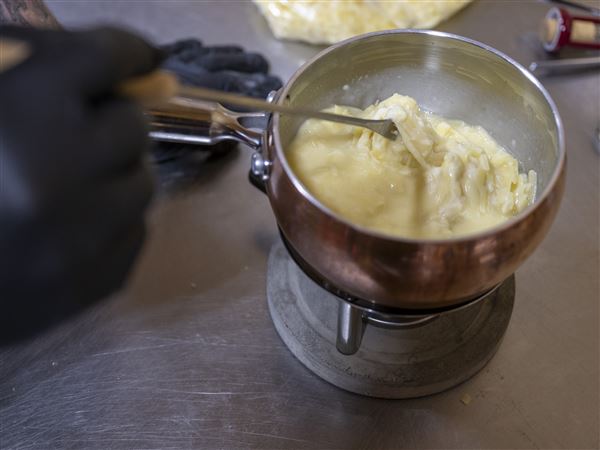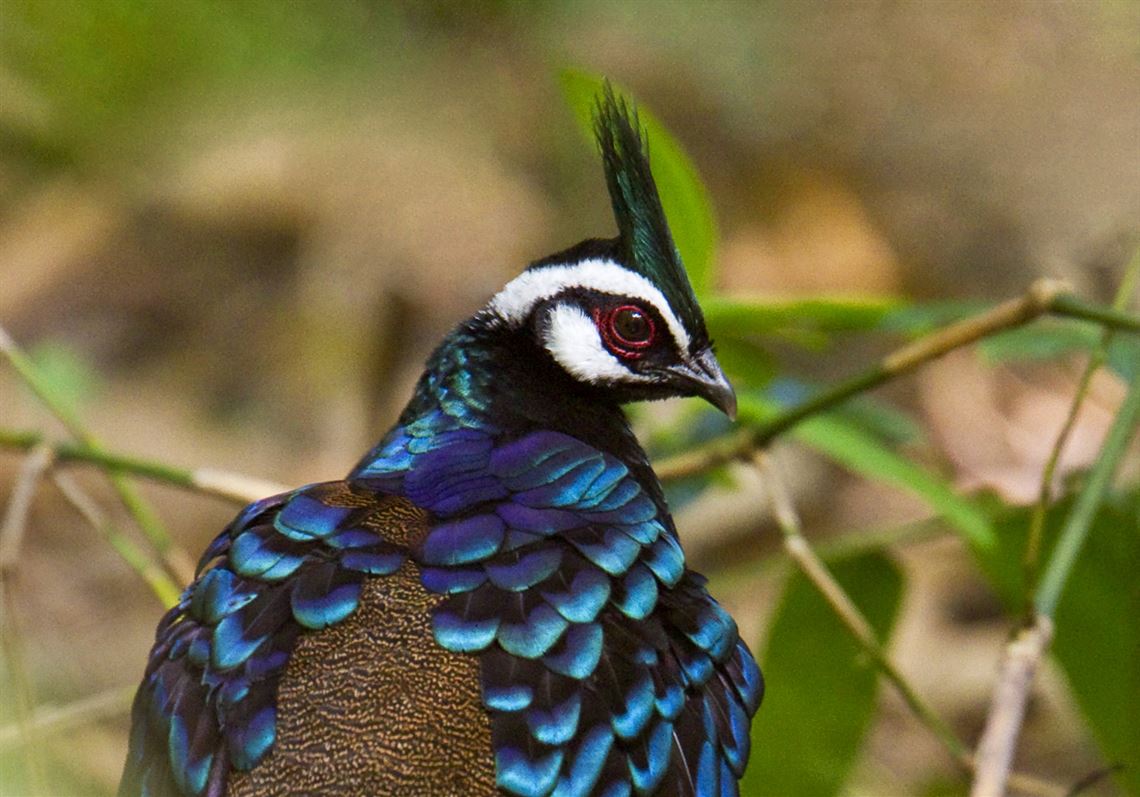This is one of a series presented by the National Aviary, which works to inspire respect for nature through an appreciation of birds.
Weighing less than a pound, the Palawan peacock pheasant is pint-sized compared to a 10-pound peacock (what we call males of the Indian and green peafowl species). But, similar to a peacock, its tail feathers are beautifully decorated with brightly colored “eye spots,” called ocelli. The Palawan has two rows of iridescent robin’s-egg-blue ocelli. When the male Palawan displays to its plain brown female mate, it tilts its body and spreads one wing to also show off the shiny blue and green feathers on its wing coverts and upper back.
Although it is related to peafowl, incorporation in its display of spread wing and spread tail feathers hints at the Palawan peacock pheasant’s closer relationship with another impressive Southeast Asian bird, the great argus, a pheasant that creates a peacock-like eye-spotted fan by spreading the highly modified secondary wing feathers on both its wings so that they join together in a continuous arc.
Although most chicken-like birds (including turkeys, grouse, pheasants and quail) tend to lay large clutches of eggs, peacock pheasants lay only two eggs in a clutch. This is another trait they have in common with the great argus. Because of this low reproductive rate and other challenges related to breeding the species in captivity, the Palawan peacock pheasant is carefully managed in North American zoos according to a Species Survival Plan. An SSP helps ensure that captive populations remain perpetually sustainable (i.e., genetically viable) without taking birds from the wild. In this way, remaining wild populations are protected, while, at the same time, a reserve captive population exists in the event it is needed for a reintroduction program to save the species from extinction in the wild.
The Palawan peacock pheasant is endemic to the Philippine island of Palawan (which means that it occurs nowhere else in the world), where it is a shy inhabitant of deep old-growth forests. With a declining population of about 10,000 birds, it qualifies for “vulnerable” conservation status according to Birdlife International. Habitat loss from mining and logging, unregulated hunting and illegal trapping for the wild bird trade are the most serious challenges faced by this species. There are eight different species of peacock pheasants, and five are considered to be vulnerable or endangered with extinction.
There are only about 50 Palawan peacock pheasants living in two dozen accredited zoos in North America. A recommended breeding pair of 2-year-old Palawans has recently joined our flock at the National Aviary. Visitors can enjoy seeing these usually secretive birds in a special elevated octagon exhibit inside the Wetlands room.
First Published: July 8, 2015, 4:00 a.m.















